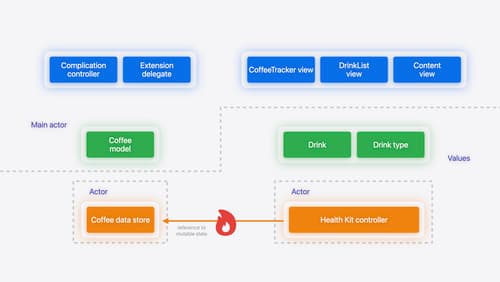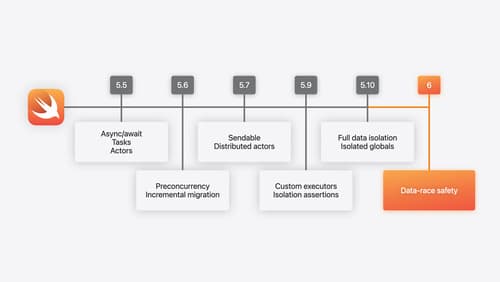migration swift 6.2
Asked on 2025-10-29
1 search
To migrate to Swift 6.2, Apple provides migration tooling to help automate necessary code changes. This is particularly useful for adopting concurrency improvements and ensuring data race safety. The migration process involves enabling concurrency checking and addressing any warnings before fully adopting Swift 6 mode. This can be done incrementally, module by module, without waiting for dependencies to migrate.
For a detailed guide on migrating your app to Swift 6, you can refer to the session Migrate your app to Swift 6 (04:40) which covers the migration process in practice, including enabling complete concurrency checking and adopting concurrency features.
Additionally, the session What’s new in Swift (26:07) discusses the Swift 6 language mode and data-race safety, which are key aspects of the migration to Swift 6.2.

What’s new in Swift
Join us for an update on Swift. We’ll talk about workflow improvements that make you more productive, and new and modernized library APIs for fundamental programming tasks. We’ll show examples of Swift adoption throughout more layers of the software stack. Finally, we’ll explore new language features for both improving approachability of concurrency, and achieving peak performance when you need it.

Migrate your app to Swift 6
Experience Swift 6 migration in action as we update an existing sample app. Learn how to migrate incrementally, module by module, and how the compiler helps you identify code that’s at risk of data races. Discover different techniques for ensuring clear isolation boundaries and eliminating concurrent access to shared mutable state.

What’s new in Swift
Join us for an update on Swift. We’ll briefly go through a history of Swift over the past decade, and show you how the community has grown through workgroups, expanded the package ecosystem, and increased platform support. We’ll introduce you to a new language mode that achieves data-race safety by default, and a language subset that lets you run Swift on highly constrained systems. We’ll also explore some language updates including noncopyable types, typed throws, and improved C++ interoperability.
